by James W. Fetzner Jr.
We hear a soft THUMP! as another large bug hits the sheet after being drawn in to the bright mercury vapor light on this moonless night in the mountains of Montana. Upon hearing that sound, our usual questions arise … “What was that?” or “Humm…Who are you?” My 9-year-old son and I try to determine if the new arrival to the sheet is a species that is new, or one that we have already seen this evening. In this case, we note that it appears to be a new brownish moth with slivery patches on its wings, a species that is new to us and a good choice for one of our attempted rearings. We scramble to capture it in one of our empty “live jars” before it flies away, in the hopes of eventually getting some eggs.
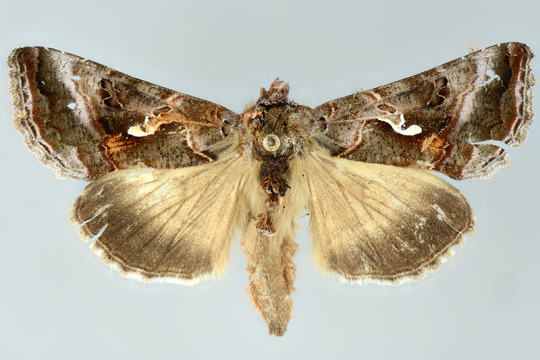
One of the easiest ways to encounter and collect insects from the wild is to erect a “bug sheet” at night and attract them en masse to your location, rather than expending a lot of effort trying to catch them individually by hand. As a scientist working in the vast insect collection at the Carnegie Museum of Natural History (CMNH), I often find myself bringing a bug sheet with me when I travel, especially when visiting family in other parts of the country. Not only does this help add specimens to our ever-expanding insect research collection, but it also serves as a fun way to experience the diversity of insects from different regions of our country. It is also an activity that kids really enjoy and engage with, and they always seem to have a great time catching interesting and colorful bugs. Even those that say they don’t like bugs seem to get caught up in the excitement when a large beetle or moth lands on the sheet.
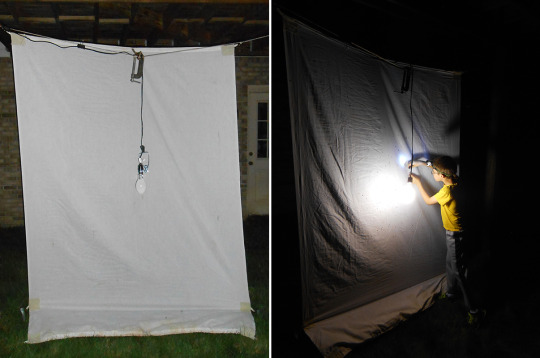
After a few hours of collecting cool bugs at the sheet the night before, my son and I wake up in the morning and check our assortment of live jars with an air of anticipation. Nothing in that one, or in that one. But wait, look at the bottom of that jar. See those little pale-yellow dots all over? Those are what we were hoping for…eggs!! Our female moth laid a bunch of eggs! So, now the fun begins.
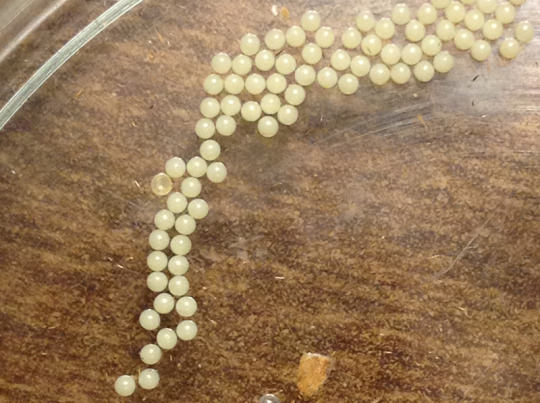
A little research in our trusty moth field guide and we determined that our bug was a species known as Autographa pseudogamma (Grote, 1875), the Delicate Silver Y moth. We also discovered that the caterpillar and host plant for this moth were unknown, (i.e., have never been described or characterized in the scientific literature). We realize that this is a great opportunity, not only to have fun rearing some caterpillars of a new species of moth that we have not encountered before, but we could also contribute to the scientific knowledge about this species by publishing a scientific paper describing the caterpillar and other aspects of its life history. A big win-win all around.
After finding out more information about this species and its close relatives, we started preparing for the eggs to hatch, which only took about seven days from the time they were laid. Once that happened, we transferred the very tiny, newly hatched caterpillars out of the live jar and into a larger plastic container with dandelion leaves from our front yard as food. They started eating and growing and my son watched them closely as they progressed through their various growth stages (instars). He had great fun watching and laughing as the 50 or so caterpillars tried to escape in all directions from the container onto our kitchen table (boy, they moved fast!) as we cleaned it out and added new food for them each day.
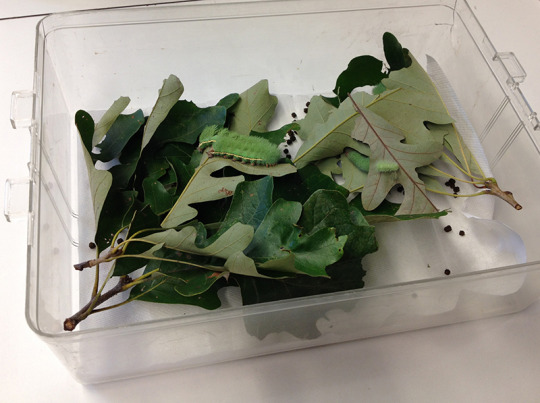
Rearing caterpillars is a lot like raising frog tadpoles. The caterpillars can be quite active, and they are constantly changing, with some species changing colors after they molt, others become hairier, and they all increase in size every time they molt to a new instar (the developmental stage in arthropods that occurs between molts). Just watching them eat or observing some of their other odd behaviors can be quite fascinating. The caterpillars we reared were voracious eaters, eventually going through several pounds of dandelion leaves in a single day!

Many children show a keen interest in caterpillars when they are encountered outdoors. Caterpillars are often seen as cute and fuzzy, which often leads to children touching them and/or picking them up. However, you should be cautious of this because some caterpillars, like the conspicuous and commonly encountered Hickory Tussock Moth (Lophocampa caryae Harris, 1841) caterpillar, can sometimes cause severe skin rashes, or even blindness if you get their hairs into your eyes. Several field guides to caterpillars are available, but they are not all-inclusive. This is because there are many moth species where the caterpillars are not known (as in our case), or where caterpillars have been found, but it is not known which adults they came from.
After reaching the final instar, the caterpillars move on to the next stage of their life cycle before they become adults, the pupa. During this stage, they metamorphose from a worm-like larva into a winged adult, and for A. pseudogamma, this process only took 11 days.
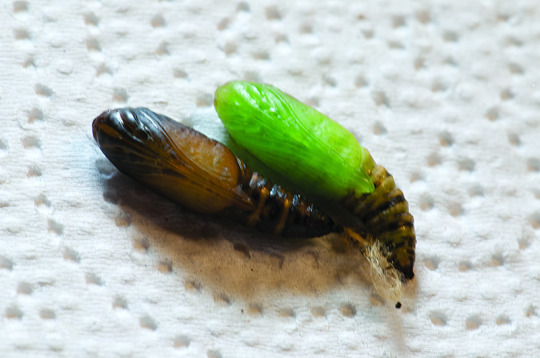
We were able to witness the entire life cycle of A. pseudogamma, from an adult to an egg to a larva to a pupa and then back to an adult again, all within the span of a single month. This was a great learning experience for my son. He was able to intimately witness first-hand the process by which insects grow and develop, which is something that few people get to see. He was also able to participate directly in the various stages of scientific discovery and, perhaps more importantly, he was able to see how a scientist would record observations and how those data are converted directly into a scientific publication. If you are interested, our study on A. pseudogamma was recently published in the Annals of Carnegie Museum. While not every caterpillar rearing will result in a published study, they are great learning experiences for young children that have an interest in nature. Studies of caterpillars like this would also make great school science fair projects. For information on getting started, see this article on how to rear caterpillars.
The huge diversity of insects, with all their different colors, sizes, and shapes, still evokes a child-like awe in me for the natural world and this is something that I hope to pass down to my son, as well as other children that might visit the insect collection here at the natural history museum (all those budding entomologists). Remember, even something that may seem silly and inconsequential, like raising a few caterpillars at home with your child(ren), can turn into something that fosters a deeper interest in the natural world, and if you’re lucky, may even end up contributing significantly to science.
James W. Fetzner Jr., Ph.D., is assistant curator in the Section of Invertebrate Zoology at Carnegie Museum of Natural History. Museum employees are encouraged to blog about their unique experiences and knowledge gained from working at the museum.
Related Content
“Say Cheese!” – Specimen Imaging in Invertebrate Zoology
Pittsburgh’s Moths Reflect Human Impact of Industry
New Moth Species Marumba Verdeciae Named For CMNH Scientific Preparator
Carnegie Museum of Natural History Blog Citation Information
Blog author: Fetzner, James W., Jr.Publication date: September 26, 2018
